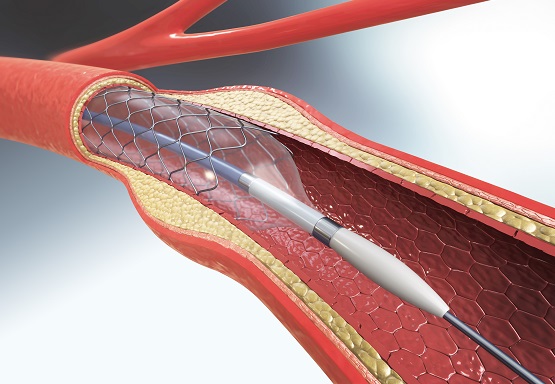
Everyone could have heard of stents – those amazing, potentially life-saving little devices that millions of people are walking around with inside their bodies. But what exactly are they, how are they inserted, and how have they changed over the years? Dr Brian Khoo, Cardiologist, Ascension Heart Centre, gets to the heart of the matter.
WHAT ARE THEY?
“Stents are tiny coils, made of composite metal, that are inserted into blocked blood vessels. Once inserted, they are expanded and left in place to keep the vessels open. Essentially, they act as scaffolds,” explained Dr Khoo, who specialises in interventional cardiology.
Though stents can be used in any blood vessels in the body, they are most commonly used in heart arteries. The stents used in heart arteries are coated with a layer of medication to reduce the risk of the blockage recurring. This type of stent is called a drug-eluting stent (DES).
HOW ARE THEY INSERTED?
Stents are inserted via a procedure called coronary angioplasty, which is performed on patients with severe heart artery blockages. This is determined by performing a coronary angiogram.
A coronary angiogram involves inserting a catheter, a small thin hollow tube some 2 to 3 millimetres in diameter, through an arm or through the groin into an artery. The catheter delivers dye into the arteries so that they show up on X-rays. A series of X-rays is then taken to determine the health of the arteries.
If a doctor detects severe heart artery blockages, he or she will perform coronary angioplasty straight away. This involves the insertion of a small balloon into the blocked artery. The balloon is carefully inflated to open up the artery, after which a drug-eluting stent is put in place and expanded. The balloon and catheter are then removed, while the stent is left in place.
The whole procedure, both angiogram and angioplasty, takes one to two hours and is performed under local anaesthetic with mild sedation.
HOW EFFECTIVE ARE THEY?
Dr Khoo confirmed that coronary angioplasty is the most effective technique to prevent further re-narrowing of the heart arteries, known as restenosis.
“In Singapore, the success rate of coronary angioplasty exceeds 95 percent, which is comparable with international statistics,” explained Dr Khoo. However, he qualified that for certain cases, the success rate may be lower.
HOW HAVE THEY EVOLVED?
According to Dr Khoo, the early coronary angioplasty procedures performed in the 70s were without stent deployment. Then came the first generation of stents, which were called bare metal stents as they were not coated with a layer of medication.
“Since 2002, DES have become the gold standard in treating patients with heart artery blockages. We are now using the third generation of DES,” shared Dr Khoo. “Heart stent technologies have improved in leaps and bounds.”
ARE THEY ALL THE SAME?
While all DES have the same general components, they differ with respect to the stent platform, the polymer used, and the type of drug used in the coating. They also vary in diameter and length.
The doctor will decide which size and type of DES is best for the patient after performing a coronary angiogram.
WHAT DOES THE FUTURE HOLD?
“The holy grail of coronary angioplasty is to perform the procedure safely without the need for any metallic scaffold at all,” said Dr Khoo.
Though coronary angioplasty with metallic DES is considered a common and relatively safe procedure, it carries a small risk of allergic reactions, infections, blood clotting and other complications. These stent-related adverse cardiovascular outcomes could theoretically be avoided if stents were not permanent metallic prostheses, but temporary implants that dissolve when their work is done.
To this end, ongoing research and development is focusing on the development of bioresorbable vascular scaffolds (BVS). However, Dr Khoo cautioned that the clinical trials of the first-generation BVS have been disappointing, compared with current-generation metallic DES. He added that the newer-generation BVS, which are being developed with thinner struts, are showing more promising preliminary results.
HOW LONG DOES IT LAST?
Until the next leap forward in stent technology, today’s stents continue to hold up well. If your doctor recommends coronary angioplasty with stent insertion, rest assured that your stent will likely last the rest of your life. Combined with a healthy diet, regular exercise and possibly medication, hopefully that will be a very long time.
Article contributed by Dr Brian Khoo, an accredited doctor of Mount Alvernia Hospital.
Ascension Heart Centre
Mount Alvernia Hospital Medical Centre D #07-60
Tel: 6464 0760
This article is taken from our My Alvernia Magazine Issue #41. Click here to read the issue on our website or on Magzter.